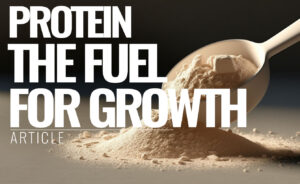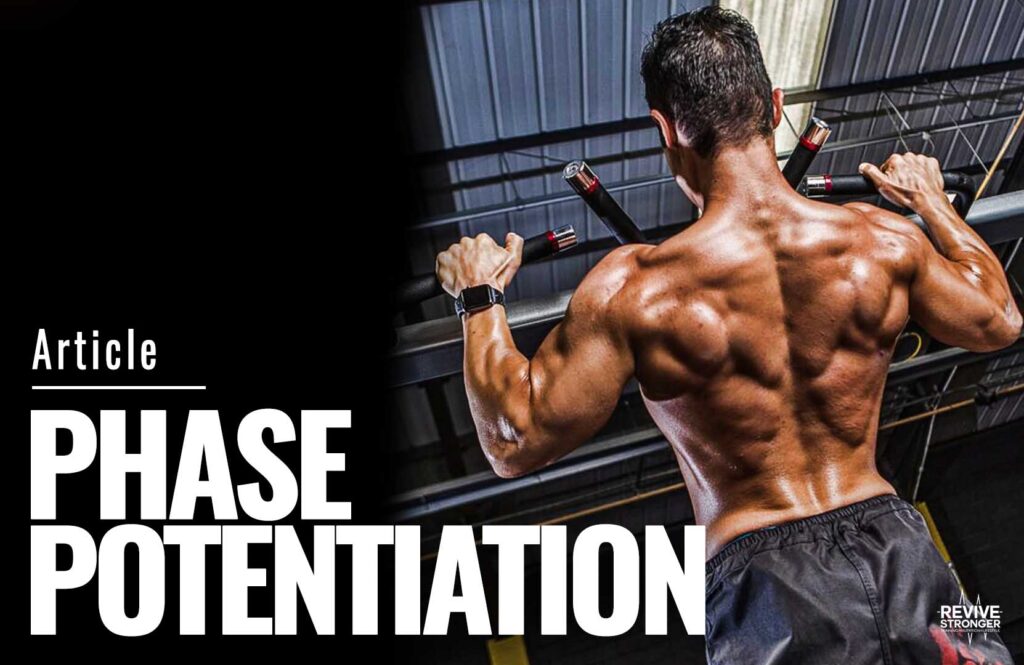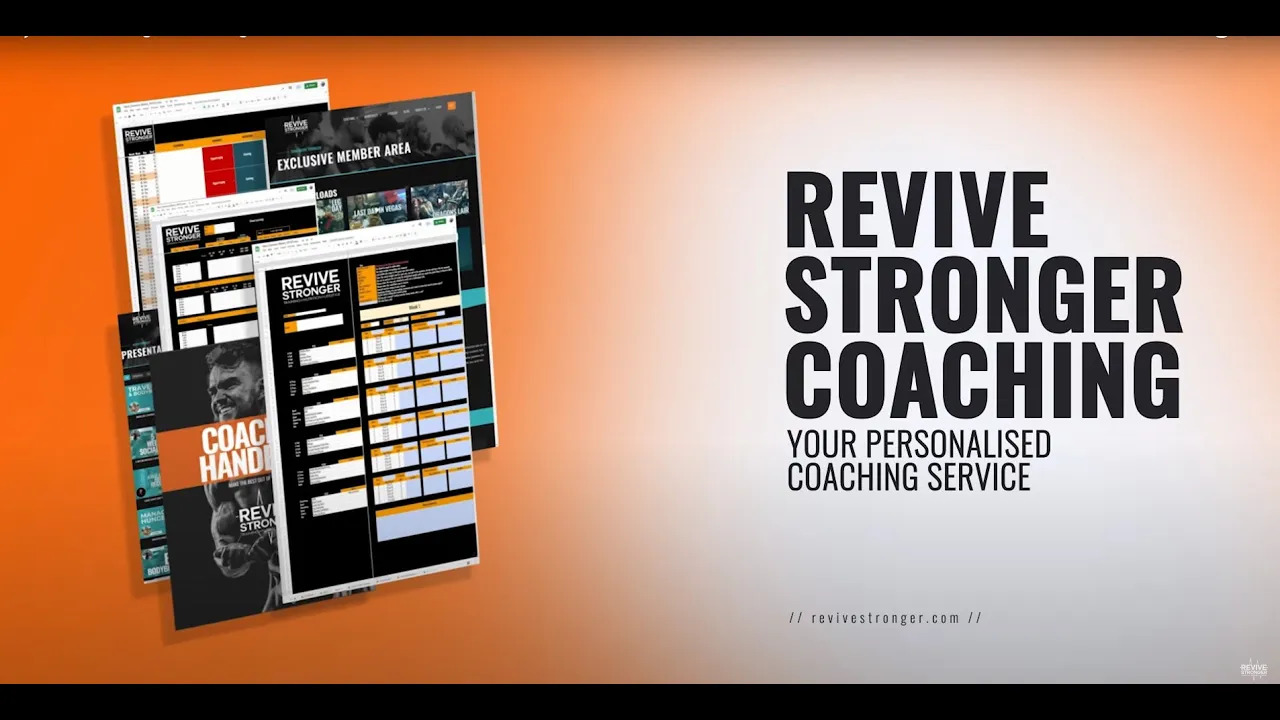
Revive Stronger
The Bigger The Base, The Bigger The Peak (Phase Potentiation)

When we first begin lifting we get strong real quick.
This is because every time we lift, our body sees it as a threat and adapts to it, getting stronger.
We get stronger mainly because of neurological adaptations, not muscle growth.
However, past this stage it becomes more difficult to get strong.
Our old training approach doesn’t hack it anymore, we stall out.
You can’t keep doing the same thing over and over and expect to see results, you need to change something, like I talked about in a Strong Case for Muscle Confusion your body adapts to what you’re doing and eventually it’ll no longer respond.
I am going to introduce to you a training concept called Phase Potentiation, or as it is also called Sequential Periodisation. It is an element of Periodisation and something I think is very valuable for anyone who has passed their novice gains. It is something I have used in my book Get Big, Stay Lean.
[bctt tweet=”The logical stringing-together of dedicated phases to get the BEST long-term performance increase.”]
Table of Contents
Phase Potentiation
The idea behind phase potentiation is that you can train for a certain trait which then heightens the results of the next. Just like in winter you clear the snow off your drive so you can easily drive your car out, rather than leaving the snow there and moving your car out very slowly. Phase potentiation works in the same way, you work on one aspect to help the next.
This concept could be put into a variety of cases, but because we want to get big and strong for the most part, that is what I am going to focus on. The approach presented will be perfect for bodybuilders, powerlifters or anyone who wants to get big and jacked.
So what do we know about a muscular strength? We know that a bigger muscle is a stronger muscle, I mean do you see any skinny powerlifters? Our muscle size is directly proportional to the force we can produce. Also some of the strongest people in the world are bodybuilders, for example Ronnie Coleman in his hay day could squat 800lbs (363kg) for multiple reps. So we can see being strong helps us get big and like wise being big helps us get strong.
Now muscle size isn’t the only aspect of strength, there is also neural adaptations, and this is why some powerlifters, although big, are smaller but stronger than many bodybuilders. Because to get good at lifting heavy weights, you need to lift them often. Sure strength helps a bodybuilder get bigger, and muscle size helps a powerlifter get stronger, but they each specialise and focus on one area more than the other, which is why we see this difference. However, they both do an element of both, because they do potentiate one another. Because when we’re stronger we can lift a heavier weight for more reps, helping us grow and when we’re bigger we have more muscle we can then make stronger.
When we are looking to build muscle we want to use all the rep ranges, because they all contribute to different muscle growth mechanisms such as mechanical tension, metabolic stress and muscle damage. I talk about these in a great deal in my book Get Big, Stay Lean. If you want to maximise your muscle growth you do not want to miss out on any.
OK, OK, so you know getting bigger helps you get stronger, and being stronger helps you get bigger, how does this relate to phase potentiation? Well you basically you want to get these two the right way round, because if you don’t you are not getting the most out of your training.
First you want to get big, so you are accumulating a lot of muscle mass to then potentiate into a strength. Not only are you gaining a lot of muscle, but because of the type of work that is required (lots of sets and reps) you’re also developing a lot of fitness, or work capacity. Work capacity is basically your ability to recover from what you’re doing, if you can recover faster between sets, faster between workouts, then you have the ability to perform more total work. If you can lift more weight, you have more potential for growth.

So it makes sense to build lots of muscle mass and increase your work capacity before then priming it with strength based work. I talked about potential strategies for this in my article on Periodisation. For example, my client Scott had come from a background of bodybuilding style training, so I got him doing a Block focussing on Strength. He hit huge numbers that he had never lifted before, because he had a large base to build and peak his strength from. Now he was stronger we could potentiate his next block where he focussed on getting big because he could now use heavier loads. If I had taken him through that block first he’d continue to stall out.
You can watch me talk about it a little here in a coaching call to a client:
Practical Application
In my article Periodisation for Progress I talked about how you might want to go about training for Muscle Size (hypertrophy) and Strength. There are however many different approaches for setting this up, the length of time you spend training for each adaption can differ. I’m going to give you a few ways you could set up a plan that utilises Phase Potentiation.
For the Intermediate lifter:
- The Texas Method: I came across this programme in Practical Programming by Mark Rippetoe and Kilgore (great book btw) and it is a great way to train for an intermediate. The basic set up is to have a higher volume day, light day and then an intensity day each week. So this uses a Daily Undulating Approach (DUP), which has been shown to be a highly effective way to train and if you want a free customisable DUP programme click here. The high volume day potentiates your intensity day, so you can progress and hit a new PR. The below is one way you might set it up.
- Muscle Growth – Day 1: 3×10 @ 65%
- Recovery Day – 2: 4×6 @ 70%
- Strength – Day 3: 3×3 @ 85% (Last Set Plus Set)
For the Advanced Intermediate lifter:
- Weekly Undulation Model (WUP): In this scenario you have two weeks focussing on one attribute, so you would have the first two weeks building size and then the last two weeks developing strength. This model recently was shown to be particularly effective, producing greater strength gains for the participants involved when compared to a block approach (I must add that I wasn’t 100% happy with the training models used e.g. squatting once per week & just to note the study was done on females). So they squat once per week (I’d recommend you increase this), deadlifted twice and bench pressed twice also and this looked like the following:
- Week 1: 5×10 @ 70%
- Week 2: 5×8 @ 75%
- Week 3: 5×5 @ 88%
- Week 4: 5×3 @ 93%
- Week 5: Deload
For the Advanced lifter:
- The Pyramid Model: Again from Practical Programming but a programme suited towards a more advanced lifter. In this model you essentially have a 4 week ‘loading’ phase, in which you accumulate lots of volume (muscle growth) and then 4 week ‘peaking’ phase in which volume comes down and intensity comes up (strength). Deloading (reducing your training volume) every 4th week. The below is how I’d advise you may want to set it up. In this scenario you are doing the main lifts twice per week, and for deadlifts you can skip the WO 2 as the deadlift produces a large amount of fatigue.
- Week 1: WO 1: 3×10 @ 65% | WO 2: 3×6 @ 75%
- Week 2: WO 1: 3×10 @ 70% | WO 2: 3×5 @ 80%
- Week 3: WO 1: 4×10 @ 72.5% | WO 2: 3×4 @ 82.5%
- Week 4: Deload
- Week 5: WO 1: 3×5 @ 80% (Last Set Plus Set) | WO 2: 5×4 @ 70%
- Week 6: WO 1: 3×3 @ 85% (Last Set Plus Set) | WO 2: 5×3 @ 75%
- Week 7: WO 1: 3×2 @ 90% (Last Set Plus Set) | WO 2: 5×2 @ 80%
- Week 8: Deload
A Different Approach:
- Block Periodisation: The Pyramid model is a form of block periodisation, with a 4 week mesocycle focussed on muscle size and then another 4 weeks on strength. That is essentially what block periodisation is, you focus on one attribute for a period of time, then move onto another. However, for more advanced lifters I think they’d be better off extending these blocks, doing 2 to 4 of each before focussing on the next. Reason being it takes time to grow muscle, and it takes time to get strong, one month will not be enough for most lifters. Especially if you have read Your Tailor Made Diet or own Get Big, Stay Lean, you know you won’t be gaining a lot of muscle in one month.
As you can see there are many approaches, and they all have their place. Find one that you like, suits your lifestyle and allows you to progress. I’ll be honest, I have come from a background of typical bodybuilding training, I then did a stint with Jim Wendlers 5/3/1 and recently when I was coached for my natural bodybuilding show I did Daily Undulating Periodisation (DUP) which had hypertrophy and strength days throughout the same week. So you can see there is a real mix, but over the past year I have been utilising Block Periodisation with myself and my clients and have seen great results.
My approach is to focus on one attribute for an entire mesocycle (month or so) and undulate the intensity within that, so say it was a hypertrophy block I would stick to around 60 – 75% of their 1RM going for 6 to 12 reps. That hypertrophy block then builds a base for a strength block, I find this ensures that both my clients and I make real progress. For example we could try and do 2 week blocks like the WUP model and get ‘mini’ PRs every two weeks. However, what happens if they miss that PR? It becomes pretty disheartening and for those who are no longer very new to training it is unlikely they’re making appreciable progress every 2 weeks. Better I find is to build a bigger base, with longer periods of time focussing on single attributes to then allow for the best potentiation, bringing bigger PRs more consistently.
This does however require the lifter to have patience, because we all love to lift heavy, but that patience will pay dividend when they smash their previous personal best. This can even work well for those with less training experience, because I use autoregulation, and that means they work to their own personal fatigue levels and are not bound to certain reps. So two lifters can use block periodisation and progress at their own rate, because they don’t use pre-determined reps, but do as many as they can whilst respecting fatigue levels. I will go over autoregulation in a future article, don’t worry, but for now just realise it means you go by feel, which allows you to work at your own rate.
- Why not focus on strength & muscle growth at once?
- This is similar to why you shouldn’t attempt to gain size and drop fat at once, they’re opposing demands. By trying to do everything at once we don’t get very far. This violates directed adaptation and doesn’t allow each phase to yield its best results.
- Won’t you get weaker when training for muscle growth & smaller when focussing on strength?
- Actually slight de-training from each of these is almost a good thing as it can re-sensitize our bodies to this type of work, meaning you avoid diminishing returns. Muscle size can be conserved so long as we are lifting heavy and eating appropriately.
Get Your Priorities in Order
Phase Potentiation is great and it can really take your results up a notch, however, it is useless on its own. For example if you don’t progressively increase the loads you’re using you will not get bigger or stronger, because without it your body has no reason to adapt. Also if you can’t recover from the previous work done, you will not get stronger or bigger, you grow outside the gym not in it, so you must manage your fatigue if you want to progress. What if you’re progressing and you are recovering really well? Maybe you’re missing out on potential gains, rather than training your legs once, you could train them twice and see better progress, that small change will make more of a difference than getting your training phased correctly.

Plus what if you never change your workouts, you always just squat, bench and deadlift, you lack variety, and your workouts become stale, if you simply changed your exercise selection say once every month you will see better progression. And none of anything I just spoke about is any use if it is not specific to what you are trying to achieve i.e. a powerlifter could do all of that, but if they’re never squatting, deadlifting or benching heavy they’re screwed, just like a programme might be great at increasing milage and then move from that to sprints, accumulating volume then intensifying, but it would be utterly useless for a bodybuilder!
I’d also note that while going through blocks of hypertrophy and strength works well for powerlifters and bodybuilders both would want to skew it to their specific needs. As mentioned, a bodybuilder or someone looking to mainly develop muscle size would spend more time in hypertrophy blocks and a powerlifter or someone who just cares about getting strong in strength blocks. Furthermore, someone newer to training has more potential muscle growth, so would be wise spending more time training to gain muscle whereas an elite lifter probably has very little potential to grow any more muscle, and so is better suited to spending time building strength. Of course a powerlifter would also need to have a peaking block, in which they show off their new strength, a bodybuilder wouldn’t need to do this. Again this is why getting specificity right is so important.
[bctt tweet=”Specificity is king and it should guide everything you do when training.”]
You need to get your priorities straight:
- Specificity
- Overload
- Fatigue Management
- Stimulus Adaption Recovery
- Variation
- Phase Potentiation
So you can see Phase Potentiation is only any good if the above areas are successfully being addressed, if not it becomes utterly useless. However, for those who are really serious about their training and want to get the best results it is something you want to look to incorporate. A good analogy is a glass with water in it, the glass is your muscle mass and the water is your strength, first you need to build up a large glass (muscle) to then fill it with water (strength), this water (strength) can then fuel you to growth your glass (muscle). By growing then filling your glass you will get a much larger drink (Larger 1 rep maximum).
Go build a large base of muscle so you can then best potentialise your strength.
References
- Sandro Bartolomei, et. al., “A Comparison of Traditional and Block Periodized Strength Training Programs in Trained Athletes,” Journal of Strength and Conditioning Research, 28(4), 2014.
- JEFFREY R. STOUT, DAVID H. FUKUDA, JAY R. HOFFMAN, AND FRANCO MERNI. BLOCK VS. WEEKLY UNDULATING PERIODIZED RESISTANCE TRAINING PROGRAMS IN WOMEN SANDRO BARTOLOMEI, Department of Biomedical and Neuromotor Science, Alma Mater Studiorum, University of Bologna, Bologna, Italy; and Sport and Exercise Science, University of Central Florida, Orlando, Florida
- M, Israetel. J, Hoffmann. C, W, Smith. Scientific Principles of Strength Training. 2015
We are a personal coaching service that helps you achieve your goals. We want you to become the best version of yourself.








Comments are closed.